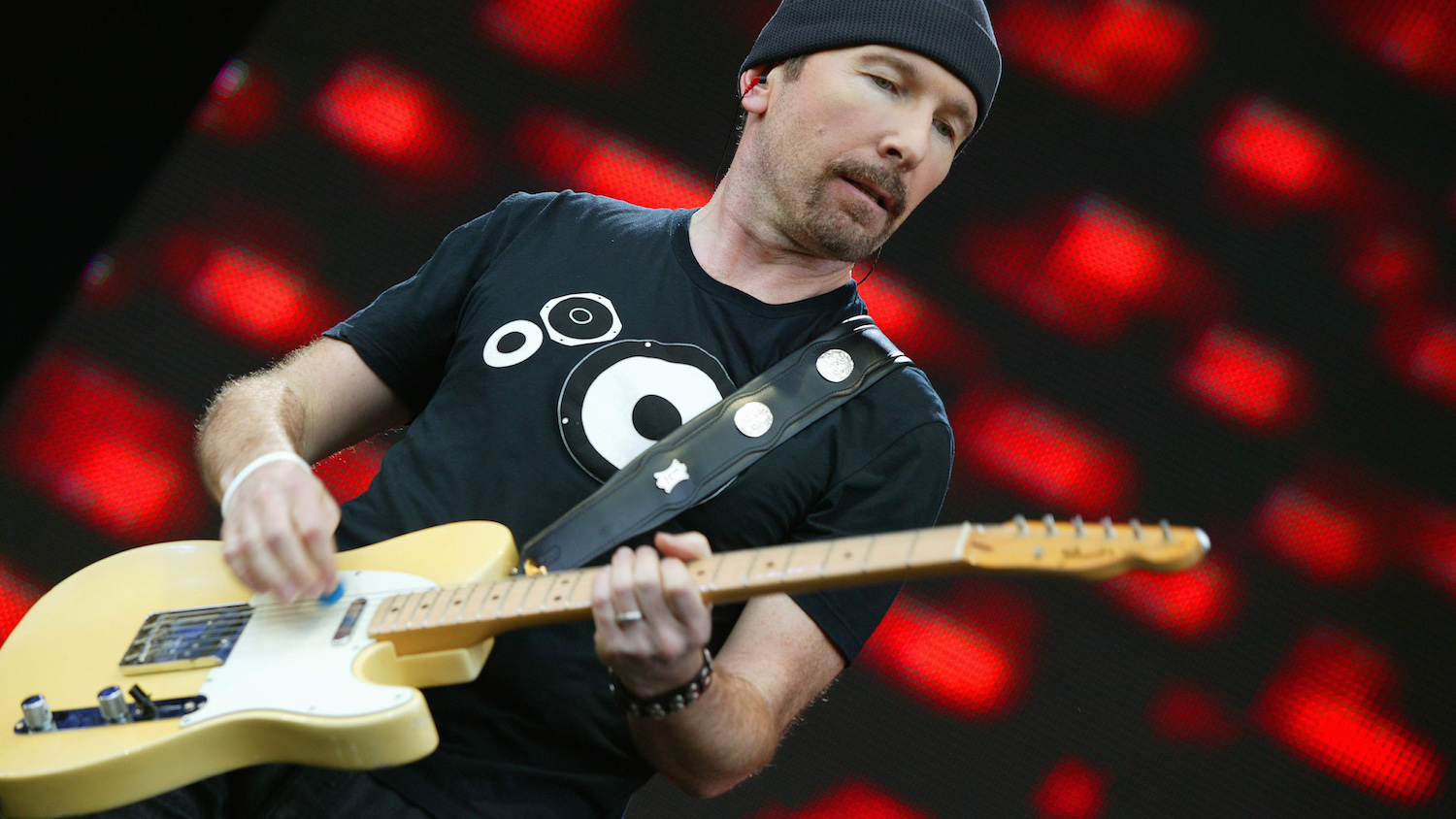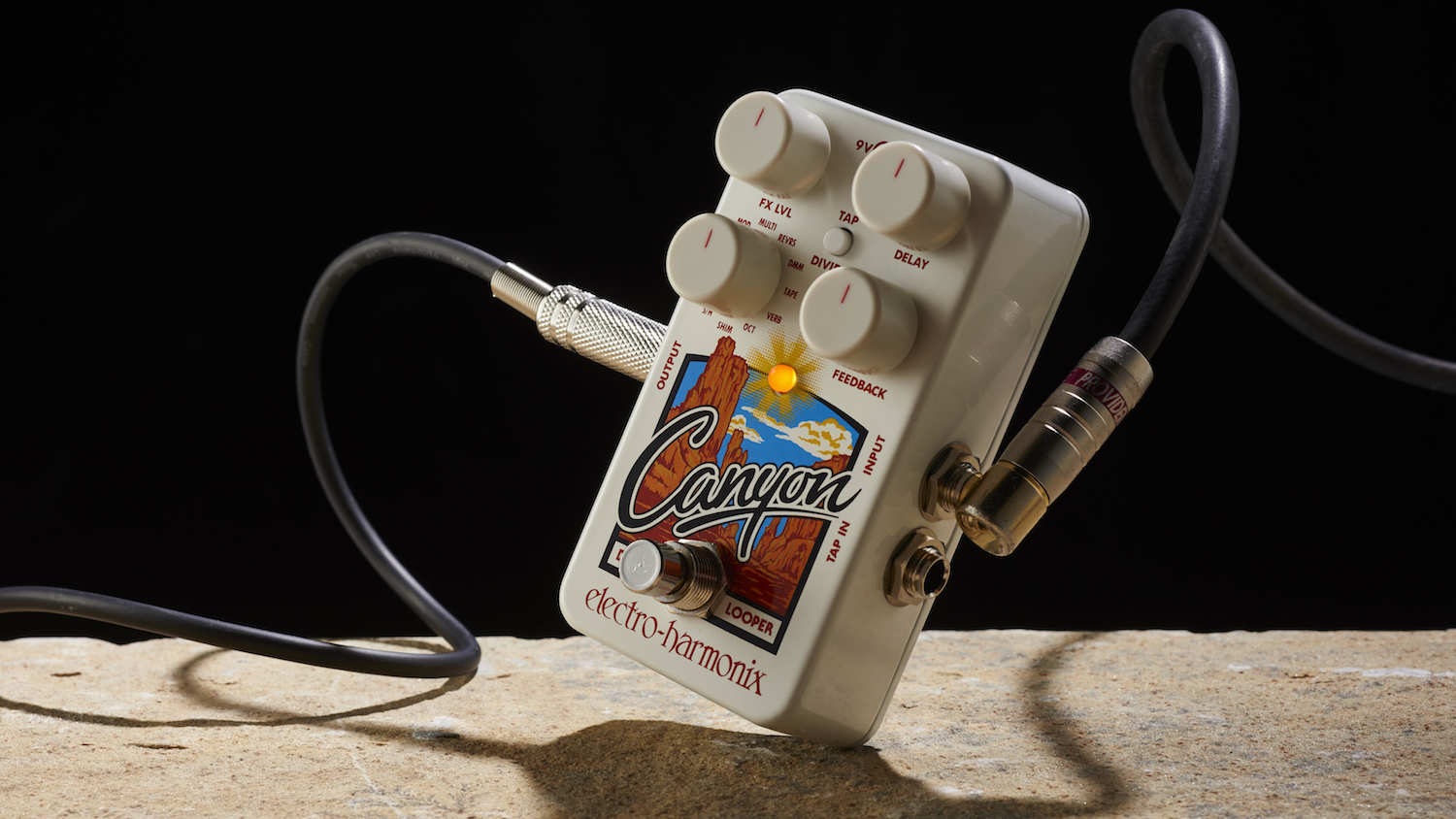Pioneers of delay: 10 innovative players who transformed guitar tone using echo and delay pedals
How David Gilmour, Eddie Van Halen, The Edge and more made delay a pedalboard essential


The 10 best delay pedals from Boss, Strymon, Electro-Harmonix and more
The delay pedal is a pedalboard essential if you are looking to add a sense of space and multidimensional texture to your electric guitar tone.
Like its good friend reverb, delay can transform your acoustically dead front room into Sun Studios Memphis, a place where magic can happen, where your guitar tone feels bigger, more musical, easier to work with.
Delay can add sheen, thickening your rhythm playing; it can make a good lead tone great, and a solitary guitar sound epic. It can also be the launchpad for artistically daring approaches to guitar playing. There’s a bit of everything from the delay pioneers featured here. And we start at the beginning with the player who made tape echo really hit the big time, Scotty Moore...
- Read more: 13 guitarists who defined the fuzz pedal
- 9 players who made the looper pedal a modern pedalboard staple
1. Scotty Moore, Elvis Presley/session
Scotty Moore’s use of tape echo under the watchful genius of producer Sam Philips during the mid-‘50s Sun Studio sessions with Elvis defined rock’n’roll guitar tone. Set between 75 and 250 milliseconds with few repeats, slapback echo was essential for adding space to electric guitar tone.
Slapback is exactly that, your notes echoing back at you in less than a quarter of a second, like when you play guitar in the bathroom (everyone does that, right?). In 1955, Moore purchased Ray Butts’ EchoSonic amplifier, using its onboard tape echo for slapback echo when recording Mystery Train – a seminal moment for popular music.
Delay of choice: 1955 Ray Butts EchoSonic amplifier
Get the tone today: Keeley Electronics Mag Echo
2. David Gilmour, Pink Floyd/solo
There were others who came after Moore. Hank Marvin’s use of the Watkins Copicat on Apache further entrenched it as a rock guitar essential, but our next pioneer is David Gilmour because he extended delay’s artistic possibilities, taking it into more ethereal and transcendent contexts.
Get the MusicRadar Newsletter
Want all the hottest music and gear news, reviews, deals, features and more, direct to your inbox? Sign up here.
Gilmour has used various devices, most famously a Binson Echorec tube-driven tape echo, but after 1977 also incorporated the rack-mounted MXR Digital Delay and Delay System II into his rig, and pursued cleaner delay tones through the ‘80s. Gilmour will use delay for those epic melodic solos, violin slide playing and for those moments where a little trippiness is needed to augment reality to his audience’s liking.
Delays of choice: Binson Echorec, MXR Digital Delay and Delay System II, Boss DD-2 and more
Get the tone today: Strymon Volante
3. Brian May, Queen
The Queen guitarist’s tone is one of the most instantly recognizable phenomena in rock music. There’s a grandeur to it, a quasi-orchestral texture, but when he engages his Maestro Echoplex it is as though this astrophysicist rock icon is indeed hacking the space-time continuum for our entertainment.
Nowhere is this more spectacular than on Brighton Rock, which features a hyper-kinetic guitar solo centerpiece that all but sees May’s Red Special speak in alien tongues. May achieved this effect by running two Echoplex units that were modded so he could set the delay as long as he liked, with an independent guitar amp output for each to keep the signal clean.
Delay of choice: Maestro Echoplex EP-3
Get the tone today: Catalinbread Belle Epoch Deluxe Tape Echo
4. Eddie Van Halen, Van Halen
Like Brian May, Eddie Van Halen was a firm believer in the Echoplex’s potential for sonic experimentation. Cathedral, from 1982’s Diver Down, sees him use tape echo with his low-friction volume control for a moment of ecclesiastical rock guitar genius.
Van Halen also uses rack-mounted units for his everyday delay tone, and pioneered the wet/dry/wet live set up wherein the effect is sent to the left and right cabinet after the amplifier while the middle cabinet would run the dry signal so he can hear what he’s doing on stage. In this setting, delay is used much like reverb, giving his tone a three-dimensional quality. He’d also use the EP-3’s preamp as an always-on tone sweetener a la Jimmy Page, Eric Johnson et al.
Delays of choice: Maestro Echoplex EP-3, Roland SDE-3000 digital delay, Lexicon PCM70
Get the tone today: Strymon Timeline
5. The Edge, U2
It is impossible to think of U2’s sound without the use of delay. No matter his guitar choice of the evening, or whichever fuzz pedal is providing the heat to his Vox AC30 combo, it is the delay that defines him. And it is dizzying. Where most use delay for space, the Edge uses it for movement, rendering his guitar tone as a sensory supernova.
He sets his delays at various tempos, with dotted-eighth notes on the repeats and other rhythmically complex settings. Maybe there is a little of Phil Spector in the Edge’s approach – a wall of sound, albeit with porous bricks to let the guitar breathe. Sorcery.
Delays of choice: Korg SDD-3000, TC Electronic 2290 Dynamic Digital Delay, AMS SDMX Digital Delay and more
Get the tone today: Line 6 DL4
6. Andy Summers, The Police
Speaking to Guitar World in 2018, Andy Summers explained that the Echoplex changed everything. “I found that I was able to add another dimension to the band in terms of the reverb, and the largeness and scale of the sound” he said. “I found a way of setting it up – I remember it very vividly – where I could play eighth notes and get 16th notes to repeat.”
This technique could be heard on songs such as I Can’t Stand Losing You and helped make the Police’s compositions really pop. Summers recommends the off-the-shelf Echoplex pedal to nail his tone. Just add a Roland chorus.
Delay of choice: Maestro Echoplex EP-3
Get the tone today: Dunlop Echoplex EP103
7. Allan Holdsworth, solo
Allan Holdsworth was a virtuoso of technique and feel, and the way he would incorporate delay into his setup – using volume pedals for organ-like swells, stacking delays for temporarily augmented guitar tones that sound futuristic still – was nothing less than an act of genius. As with the greats, he used his effects to articulate new musical ideas as well as to enhance his tone.
Holdsworth used a pair of rack-mounted Rocktron Intelliflex units, and collaborated with Yamaha on the UD Stomp modulation/delay. The US Stomp was programmable, with MIDI connectivity and expression pedal input. Like Holdsworth, it was ahead of its time. Sadly it’s now discontinued.
Delays of choice: Rocktron Intelliflex, Yamaha UD Stomp
Get the tone: TC Electronic Flashback X4
8. Eric Johnson, solo
A veritable tonehound, Eric Johnson has enjoyed a long and harmonious relationship with the Echoplex, and on Cliffs of Dover he deploys it in service of quasi-violin’d guitar tone, with all the harsh edges smoothed off.
The key to the tone is to place the tape echo ahead of the overdrive pedal so that it is more prominent in the quieter passages and gets out of the way when you get busy with the busier passages. Again, a little of the sweetness in that lead tone comes from the EP-3 preamp, which many pedal manufacturers have tried to replicate.
Delay of choice: Maestro Echoplex EP-3
Get the tone today: Catalinbread Belle Epoch Deluxe Tape Echo
9. Joe Satriani
We don’t talk enough about Joe Satriani’s guitar tone, which is like EVH via Andromeda. Sure, a lot of that comes from his smooth-as-custard legato, but he has a delay power move that sees him stack a short delay into a long delay, and it really is sumptuous.
Like Holdsworth, with Satch there was a discontinued signature delay, the Vox Time Machine, that could get the tone. It combined Hi-Fi and Lo-Fi settings for a modern clean and vintage-analog hybrid delay, and it had a lengthy maximum delay time of 5,800ms. It’s since been discontinued, but Satch has been known to run two Boss DD-3 pedals into one another as an alternative.
Delays of choice: Vox Time Machine, Boss DD-3
Get the tone today: Boss DD-500
10. Gina Gleason
Given that we are living in the golden age of guitar effects pedals, it would be remiss if we didn’t find a player who debuted at a time when pedalboard curation was becoming an artform in itself.
Who better than Gleason? Her arrival in Baroness has accelerated the band’s evolution, with her judicious mastery of textures and signal path iconoclasm makes her a perfect foil for John Dyer Baizley – the co-architect of a sound that melds a lush out-of-body psych vibe to the guitar tone and deploys it in songs that are grounded and human.
She uses the industry standard Strymon Timeline and the more maverick analog EarthQuaker Devices Disaster Transport Sr delay and reverb.
Delays of choice: EarthQuaker Devices Disaster Transport Sr, Strymon Timeline
Get the tone today: EarthQuaker Devices Disaster Transport Sr
Jonathan Horsley has been writing about guitars and guitar culture since 2005, playing them since 1990, and regularly contributes to MusicRadar, Total Guitar and Guitar World. He uses Jazz III nylon picks, 10s during the week, 9s at the weekend, and shamefully still struggles with rhythm figure one of Van Halen’s Panama.
“A pedal that sings with harmonic richness and blooming touch response”: Tone King offers up boutique tube amp tones for your pedalboard with the Imperial Preamp
“Each and every unit is perfectly dialled in to the 'sweet spot' that can be so elusive to find in vintage pedals”: Pigtronix’s Gas Giant is a high-gain fuzz pedal with a FET-driven onboard noise gate










